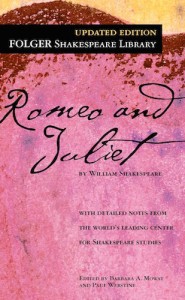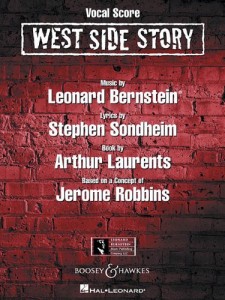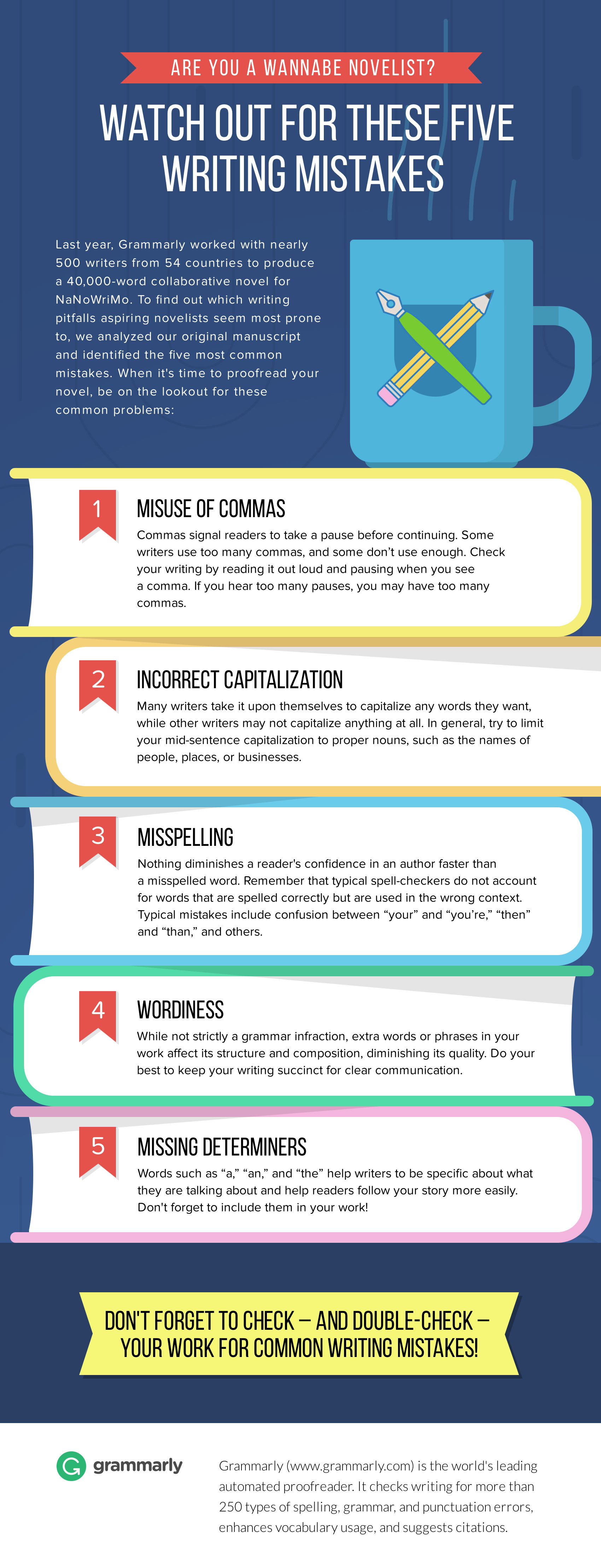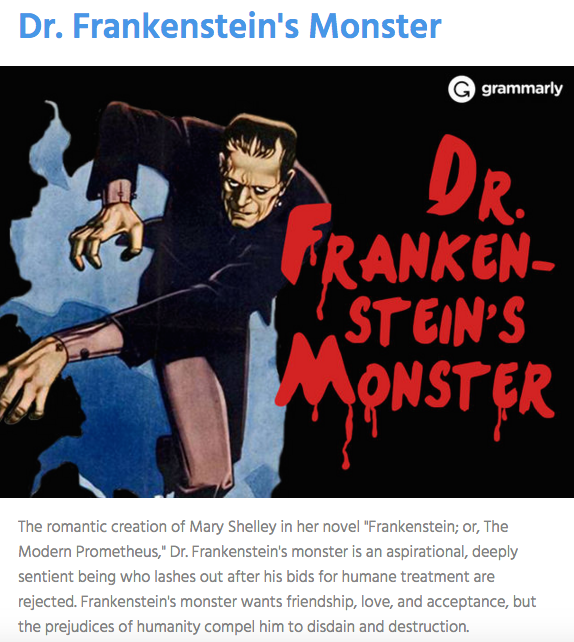Five Mistakes To Avoid in Your NaNoWriMo Novel: an Infographic by Grammarly
So, did you finish that novel for National Novel Writing Month? If so, congratulations! Now that you have your 50,000 words written, it’s time for the next stage: editing your novel! To help get you started, Grammarly has put together a list of the five most common writing mistakes that came up in last year’s 40,000-word collaborative novel project. Be sure to watch for these mistakes while editing your NaNoWriMo novel! Enjoy!
Today’s creative writing post is brought to you by Grammarly, the World’s Best Grammar Checker. For more information on Grammarly, visit https://www.grammarly.com/grammar-check. Thanks for reading! Happy writing!
Listening to the Voices in Your Head: Inner Writer vs. Inner Critic
Done with that NaNoWriMo novel yet? If so, congratulations! If not, don’t sweat it: you still have five more days to reach that 50,000-word milestone. We’re now in the final stretch of NaNoWriMo, which means it’s crunch time for hundreds of participating writers still striving for that winner’s badge. And at this critical stage in the event, I figure now is the perfect time to discuss those voices in every writer’s head: the inner writer and the inner critic.
You probably hear these voices in your mind whenever you write (my voices are so active that I once wrote a poem about them!), but if you’ve been participating in NaNoWriMo, they must have been in overdrive this past month. Knowing when to listen to which voice is a skill that every writer needs to master in order to turn out a decent work, but it can be difficult if they’re both constantly trying to talk at the same time. The truth is that these voices are equally important, so how do you achieve that perfect balance between them?
When to Listen to the Writer
 The writer is the wide-eyed idealist in you. It’s the innocent unbridled spirit that just wants to tell stories without the slightest regard for form and style. Imagine it as the starry-eyed child you once were still living on in your heart and fueling your art. In a nutshell, the writer is pure creativity.
The writer is the wide-eyed idealist in you. It’s the innocent unbridled spirit that just wants to tell stories without the slightest regard for form and style. Imagine it as the starry-eyed child you once were still living on in your heart and fueling your art. In a nutshell, the writer is pure creativity.
Listen to the writer for ideas and motivation. If there’s a story inside you waiting to be told, let the writer set it free and start it off on its journey to the outside world. Don’t worry so much about the technical aspects of it just yet; the important thing is to get the story out of your system first, before the doubts begin to creep in and slow or halt your progress. When your energy to write begins to waver, the passion and emotion of the writer will motivate you to keep going until your story is complete. The writer’s voice is there to cheer you on and remind you that if you have a story consuming your thoughts, then chances are it’s worth writing.
When to Listen to the Critic
 The critic is your inner skeptic. The polar opposite of the writer, the critic serves as the editor’s voice that balances out the idealistic and ingenuous artist. While the writer is fueled by creativity and emotion, the critic is driven by technical perfection, and if the writer represents the impulsive inner child, the critic represents the levelheaded outer adult who keeps him/her in check.
The critic is your inner skeptic. The polar opposite of the writer, the critic serves as the editor’s voice that balances out the idealistic and ingenuous artist. While the writer is fueled by creativity and emotion, the critic is driven by technical perfection, and if the writer represents the impulsive inner child, the critic represents the levelheaded outer adult who keeps him/her in check.
The best time to listen to the critic is after your first draft is complete. Once the core story is written, you don’t have to worry so much about the critic’s voice holding you back and instead can start letting it push you forward. The purpose of the critic is to find the flaws in your work and figure out how to fix them, whether they’re as simple as grammatical errors or as complex as plot structure. It’s only too easy to resent this voice for all its negative feedback, but if you keep in mind that such comments are nothing personal and simply meant to help you make your work as presentable to the public as possible, you can turn your inner critic from your worst enemy into one of your strongest allies.
The Perfect Balance
Despite all the conflict between them, it’s important to remember that both the inner writer and the inner critic are essential to a writer’s success. The trick to finding the perfect balance between them is to let them complement each other: the writer will drown out the insecurities of the critic, and the critic will polish the rough groundwork of the writer. Learn to listen to both voices equally, and they’ll help you create your greatest works of art! Good luck!
Do you struggle with the voices in your head? Which one do you hear most often: the writer or the critic?
10 Fictional Characters Based on Real People: An Infographic by Fresh Essays
When it comes to seeking inspiration for your fictional characters, there’s no better place to find it than in the people you know in real life (a point I’ve already made in another post I wrote last year). Such was the case of many famous authors, whose characters were inspired by the real people in their lives. Writers are often motivated by such figures as teachers, close friends, and comrades-in-arms, and sometimes these people make enough of a lasting impression to earn a full fictional counterpart in a book.
So for a little more inspiration heading into the second half of your NaNoWriMo journey, here’s an infographic put together by Fresh Essays highlighting the most interesting examples of well-known fictional characters based on real people. Enjoy!
Are any of your characters based on people you know in real life? What are your favorite examples of characters based on real people?
Today’s creative writing post is brought to you by Fresh Essays, a professional custom essay writing service. For more information, visit http://www.freshessays.com. Thanks for reading! Happy writing!
Which Literary Monster Are You? A Quiz by Grammarly
Yes, I know Halloween has come and gone, but it’s never too late to have some fun with a monster quiz, right? A couple of weeks ago, Grammarly shared a Halloween-themed quiz: Which Literary Monster Are You? While you’re working on that 50,000-word novel for NaNoWriMo, why not take a break to find out which famous monster from literature fits your personality? It may even inspire you to write some horror fiction of your own! Have fun!
Here’s my inner literary monster, who just so happens to be one of my favorites: Dr. Frankenstein’s monster! Seems fitting for me, as Frankenstein’s creation is an emotional being who is misunderstood by the people he encounters. That is, after all, one of the reasons I became a writer!
Who’s your literary monster? Feel free to share your result in the comments!
Today’s creative writing post is brought to you by Grammarly, the World’s Best Grammar Checker. For more information on Grammarly, visit https://www.grammarly.com/grammar-check. Thanks for reading! Happy writing!
10 Inspirational Writing Quotes for NaNoWriMo
It’s the first week of National Novel Writing Month, and you know what that means: time to finally sit down and write that novel! Of course, this is much easier said than done, but hammering out 50,000 words in 30 days, daunting as it may seem, is certainly possible. Sometimes all you need to get started on reaching that goal is a bit of motivation.
So to help start you off on your NaNoWriMo journey, here are 10 tips on writing in the form of inspirational quotes from famous authors. Enjoy, and best of luck in this year’s NaNoWriMo!
 1) Be ruthless about protecting writing days, i.e. do not cave in to endless requests to have “essential” and “long overdue” meetings on those days. – J.K. Rowling
1) Be ruthless about protecting writing days, i.e. do not cave in to endless requests to have “essential” and “long overdue” meetings on those days. – J.K. Rowling
2) If you don’t have time to read, you don’t have the time (or the tools) to write. Simple as that. – Stephen King
3) This is how you do it: you sit down at the keyboard and you put one word after another until it’s done. It’s that easy, and that hard. – Neil Gaiman
4) No tears in the writer, no tears in the reader. No surprise in the writer, no surprise in the reader. – Robert Frost
5) The best time for planning a book is while you’re doing the dishes. – Agatha Christie
6) Substitute ‘damn’ every time you’re inclined to write ‘very’; your editor will delete it and the writing will be just as it should be. – Mark Twain
7) Don’t tell me the moon is shining; show me the glint of light on broken glass. – Anton Chekhov
8) There is nothing to writing. All you do is sit down at a typewriter and bleed. – Ernest Hemingway
9) You must stay drunk on writing so reality cannot destroy you. – Ray Bradbury
10) If there’s a book that you want to read, but it hasn’t been written yet, then you must write it. – Toni Morrison
What are your thoughts on these inspirational writing quotes? Any other favorites you would add to this list?
What If? Writing Prompts: Horror III
Halloween is just around the corner, so why not stock up on some new “What If?” Writing Prompts for the occasion? This week features another set of horror-themed prompts. See what scary stories you can create from these ideas! Have fun!
 What if… you woke up in someone else’s body?
What if… you woke up in someone else’s body?
What if… your neighbors became zombies and started coming after you?
What if… you discovered a monster living in your basement?
What if… the ghost stories you and your childhood friends used to tell… turned out to be true?
What if… you discovered a carnivorous plant… that ate people?
Good luck writing some more horror stories!
If you have any “What If?” writing prompt suggestions (for any theme), please feel free to share them in the comments below. Ideas I like may be featured in future “What If?” posts, with full credit and a link to your blog (if you have one)! Also, if you’ve written a piece based on an idea you’ve found here, be sure to link back to the respective “What If?” post. I would love to see what you’ve done with the prompt! Thank you!
20 Sets of Homonyms to Watch Out For
It’s time for some more fun with confusing English words! So far, I’ve shared a list of 25 commonly confused words and phrases and a list of 20 English words that change in meaning when pronounced differently. Continuing on that line, today’s post focuses on homonyms (also called homophones): words that sound the same but that have different spellings and meanings. Homonyms are one of the most confusing types of words for new English speakers to learn, and while my 25 words post already includes some common examples such as “your/you’re” and “their/there/they’re”, there are still plenty of examples of like-sounding words that warrant some attention.
So just for fun, here are 20 sets of homonyms that you should look out for while reading or writing in English. Enjoy!
 1) Aisle/Isle – An “aisle” is a passage between shelves or rows of seats. An “isle” is a small island or peninsula.
1) Aisle/Isle – An “aisle” is a passage between shelves or rows of seats. An “isle” is a small island or peninsula.
2) Capital/Capitol – A “capital” is the most important city of a region. “Capital” also refers to wealth or uppercase letters. A “capitol” is a state legislature building in the United States, while the “Capitol” is the U.S. Congress building in Washington D.C.
3) Click/Clique – A “click” is a short, sharp sound. A “clique” is a small group of people with common interests.
4) Colonel/Kernel – A “colonel” is a high-ranking army officer. A “kernel” is a type of soft and edible seed.
5) Descent/Dissent – A “descent” is an act of moving downward. “Dissent” is an expression of opinions that vary from those previously or commonly held.
6) Discreet/Discrete – To be “discreet” is to be careful and circumspect. To be “discrete” is to be separate and distinct.
7) Exercise/Exorcise – To “exercise” is to practice physical activity to improve health and fitness. To “exorcise” is to drive out an evil spirit from a person or place.
8) Faint/Feint – To “faint” is to briefly lose consciousness. To “feint” is to make a false move meant to distract or deceive, typically during a fight.
9) Foul/Fowl – To be “foul” is to be offensive or wicked. A “fowl” is a domestic bird raised for its eggs and meat.
10) Hoarse/Horse – A “hoarse” voice is rough and harsh-sounding. A “horse” is a hoofed domesticated animal raised for riding, racing, and working.
11) Idle/Idol/Idyll – To be “idle” is to be inactive. An “idol” is someone or something that is greatly admired, or an image of a deity used as an object of worship. An “idyll” is an extremely idealized peaceful and picturesque scene.
12) Knot/Naught/Not – A “knot” is a fastening made by tying a piece of rope or string. “Naught” is zero or nothing. “Not” is an adverb used to form a negative.
13) Metal/Mettle – “Metal” is a solid material that is typically malleable, fusible, and ductile. “Mettle” is a person’s ability to face difficulties with spirit or resilience.
14) Miner/Minor – A “miner” is someone who works in a mine. A “minor” is someone who is underage. “Minor” also refers to what is lesser in significance.
15) Patience/Patients – “Patience” is the virtue of tolerance. “Patients” are people receiving medical treatment.
16) Peak/Peek/Pique – To “peak” is to reach the highest point. To “peek” is to look quickly and secretively. To “pique” someone’s interest or curiosity is to stimulate it.
17) Pore/Pour – To “pore” over reading materials is to be immersed in the study of them. To “pour” is to drop liquid from a container in a steady stream.
18) Principal/Principle – To be “principal” is to be the most significant. A “principal” is a person with the highest authority in an institution. A “principle” is a fundamental truth.
19) Stationary/Stationery – To be “stationary” is to be immobile. “Stationery” is specially printed writing paper.
20) Steal/Steel – To “steal” is to take someone else’s belongings without their permission. “Steel” is a sturdy alloy consisting of iron and carbon.
What are your thoughts on these homonyms? Any others you would add to this list?
What If? Writing Prompts: Nature III
Here’s another set of “What If?” Writing Prompts for you! This week’s post features another batch of prompts in the theme of nature and environmentalism. See what environmental stories you can create around these ideas! Enjoy!
 What if… there were only one type of energy source to power everything in the world?
What if… there were only one type of energy source to power everything in the world?
What if… all humans lived in communion with animals?
What if… environmental conservation were always a political priority?
What if… there were no major urban areas in the world?
What if… all manmade modes of transportation suddenly disappeared?
Have fun writing more stories about nature!
If you have any “What If?” writing prompt suggestions (for any theme), please feel free to share them in the comments below. Ideas I like may be featured in future “What If?” posts, with full credit and a link to your blog (if you have one)! Also, if you’ve written a piece based on an idea you’ve found here, be sure to link back to the respective “What If?” post. I would love to see what you’ve done with the prompt! Thank you!
Off The Bookshelf: Romeo & Juliet/West Side Story
I know it’s been a while since I’ve shared a book on my Off The Bookshelf segment, so this week, I’m going to discuss one of my favorites. I’ve talked about this famous story in depth a few times before, notably to discuss five points that are often missed and the reasons why it’s a greater story than many people think. Once again, I’d like to revisit this classic tale of forbidden love, this time in a double dose. I hope you’ll enjoy this review of one of my favorite books off my shelf: Romeo & Juliet/West Side Story.
Summary
First published in 1965, Romeo & Juliet/West Side Story comprises two stories in one: the stage play Romeo & Juliet by William Shakespeare; and the 1957 Broadway musical West Side Story by Arthur Laurents. The book also includes explanatory notes for unfamiliar expressions in Shakespeare’s play and a foreword by renowned theater director Norris Houghton.
Romeo & Juliet tells the story of two teenagers in Renaissance Verona who fall in love despite the age-old feud between their families, but who are driven to an untimely end by fate and the violent circumstances surrounding them. Inspired by Shakespeare’s play, West Side Story tells the same tragic tale of a doomed romance between young lovers, but updates the setting to modern-day New York and the protagonists to a white American boy and a Puerto-Rican girl torn apart by the racism-fueled rivalry between the street gangs with which they’re associated. As much for Romeo and Juliet as for Tony and Maria, love blossoms at first sight and against the odds, only to be threatened and destroyed by hatred that brings tragedy not just to the young lovers, but to their war-torn society as a whole.
Review
 I first read this book as a teenager, shortly after watching the 1961 movie West Side Story as homework for singing lessons (I was to sing “Somewhere” at my first presentation). Long familiar with the plot of the original play, I had fallen in love with the story of forbidden romance and was eager to finally read Shakespeare’s timeless classic for myself. Of course, I’ve made my love for the story itself abundantly clear in the past, so this review will focus a little more on the format of this book than on the pieces within it.
I first read this book as a teenager, shortly after watching the 1961 movie West Side Story as homework for singing lessons (I was to sing “Somewhere” at my first presentation). Long familiar with the plot of the original play, I had fallen in love with the story of forbidden romance and was eager to finally read Shakespeare’s timeless classic for myself. Of course, I’ve made my love for the story itself abundantly clear in the past, so this review will focus a little more on the format of this book than on the pieces within it.
What I find most interesting about this particular book is the way the same story is presented over two very different backdrops: one in Renaissance Italy, the other in 1950s New York. By combining both stories into one volume, Romeo & Juliet/West Side Story offers a unique way to visualize the tale of star-crossed young love across time. The similarities and differences between these popular pieces become clearer as the reader is able to quickly swap a scene in one play for its parallel in the other: the feud between the Montagues and the Capulets becomes a turf war between the Jets and the Sharks, the Capulet ball becomes the dance at the gym, the poetic exchange at Juliet’s balcony becomes a duet on Maria’s fire escape. Each story is beautiful in its own right, but I’ve found that to be able to compare and contrast them so easily makes the fundamental plot all the more fascinating.
 Romeo & Juliet was the first Shakespearean play I ever read, so naturally I was yet unfamiliar with Elizabethan English. This is where the notes in the back of the book came in extremely handy. Essential words and terms are referenced to the line with modern English translations and explanations wherever necessary, so the notes were a tremendous help when it came to deciphering the meanings within Shakespeare’s verse. It’s worth noting that they’re still helpful to any new reader who plans to read more of Shakespeare, as several of the expressions used in Romeo & Juliet commonly appear in his other works. Unfortunately, a similar device isn’t available for West Side Story, which relies on its readers’ familiarity with the music to be fully enjoyable, but this is merely a minor drawback to what is otherwise an equally stunning theatrical masterpiece.
Romeo & Juliet was the first Shakespearean play I ever read, so naturally I was yet unfamiliar with Elizabethan English. This is where the notes in the back of the book came in extremely handy. Essential words and terms are referenced to the line with modern English translations and explanations wherever necessary, so the notes were a tremendous help when it came to deciphering the meanings within Shakespeare’s verse. It’s worth noting that they’re still helpful to any new reader who plans to read more of Shakespeare, as several of the expressions used in Romeo & Juliet commonly appear in his other works. Unfortunately, a similar device isn’t available for West Side Story, which relies on its readers’ familiarity with the music to be fully enjoyable, but this is merely a minor drawback to what is otherwise an equally stunning theatrical masterpiece.
Both Romeo & Juliet and West Side Story have had a profound impact on audiences: one for its poetic deconstruction of romantic ideals, the other for its dramatic commentary on the consequences of social intolerance. The presentation of both plays in one volume brings to light the true timelessness of Shakespeare’s classic, proving that the story of love born against hate will be forever relevant as long as people and society continue to be powerfully motivated by both.
Inspiration
Romeo & Juliet is the archetype of forbidden love thwarted by circumstance, so it’s no wonder the story has translated so well into the modern setting of West Side Story. Whether set between feuding families or warring street gangs, this tragic love story reads not only as the epitome of the passion and dangers of young romance, but as a lesson on how hatred kills. Perhaps for its universal themes of love, intolerance, and the cruelty of fate, the plight of the star-crossed lovers is a tale that has fascinated readers for centuries and certainly will for many more to come. It has served as inspiration for much of my romantic fiction, and to this day I indulge in it whenever I feel the need to satisfy my cravings for drama and romance.
For all the above reasons and more, Romeo & Juliet is and likely always will be my favorite story at its core, regardless of the characters, settings, and details that flesh it out. To be able to enjoy my two favorite versions of the story in a single volume is simply the cherry on top of a classic poetic delight.
Celebrate World Teachers’ Day: an Infographic by Grammarly
It’s time for another infographic from our good friends at Grammarly! Today’s campaign is dedicated to those special people who have had an impact on us all: teachers! October 5th is World Teachers’ Day, a day to celebrate educators across the globe. Teaching may be one of the most important jobs in the world, yet over half the countries and territories in the world have a shortage of teachers. To raise awareness of the value that teachers have in our society, Grammarly has put together an infographic detailing statistics about teachers and education around the world.
Enjoy this infographic, and be sure to spread the word to help draw attention to the importance of teachers! And while you’re at it, don’t forget to thank your favorite teacher for the influence they’ve had on your life! Happy World Teachers’ Day!
Today’s creative writing post is brought to you by Grammarly, the World’s Best Grammar Checker. For more information on Grammarly, visit https://www.grammarly.com/plagiarism-checker. Thanks for reading! Happy writing!








Recent Comments